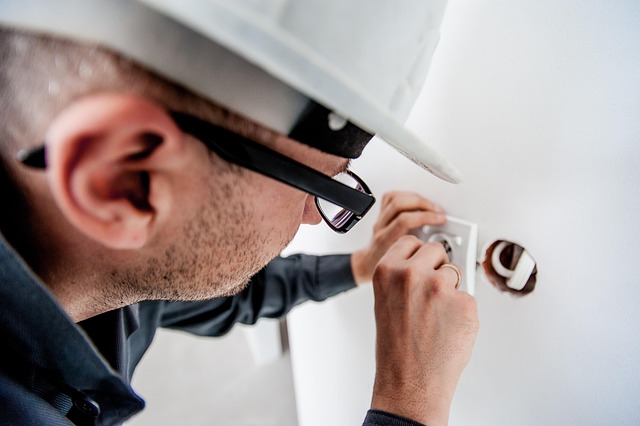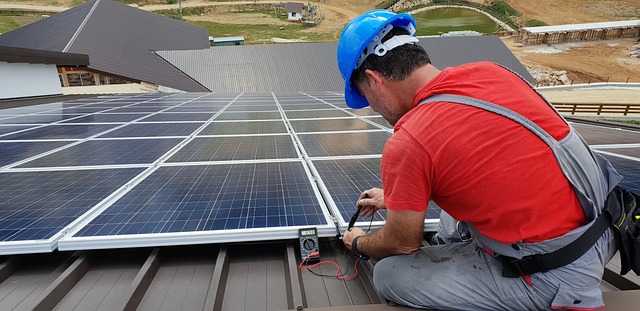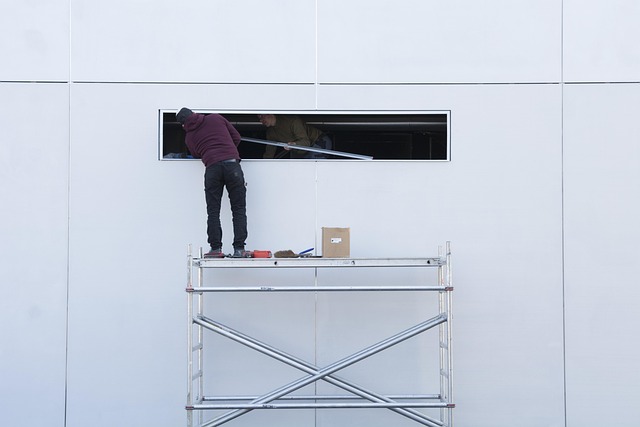Before installing ceiling fans or air conditioning units, electricians prioritize safety by assessing electrical systems, using proper tools and protective gear, and shutting off power. They then measure spaces, determine fan requirements, and select suitable types. For AC units, they consider space size, unit types, energy efficiency, noise levels, and wiring complexity, ensuring optimal performance and compliance with local codes through meticulous integration.
“Transform your living spaces with efficient cooling solutions! This comprehensive guide caters to both professionals and DIY enthusiasts, covering ceiling fan and air conditioning unit installations. From safety precautions for electricians to choosing the right equipment, we break down each step. Learn how to assess your space, select suitable AC units, and master the installation process. Achieve a comfortable environment while ensuring optimal energy efficiency with expert tips from this essential resource.”
- Prepare for Installation: Safety First for Electricians
- Assessing Space and Fan Requirements
- Selecting Suitable Air Conditioning Units
- Step-by-Step: Ceiling Fan Installation Process
- Integrating AC Unit: Wiring and Connection Tips
Prepare for Installation: Safety First for Electricians

Before tackling any ceiling fan or air conditioning unit installation, electricians must prioritize safety measures. This involves assessing the electrical system for potential hazards and ensuring proper tools and equipment are readily available. Protective gear, such as insulated gloves and safety glasses, is non-negotiable to safeguard against electrical shocks and flying debris.
Electricians should also verify that power is shut off at the main circuit breaker or fuse box to prevent accidental live wire contact. With safety as their top priority, they can then proceed with precision, ensuring a secure and efficient installation that complies with local electrical codes.
Assessing Space and Fan Requirements

When preparing for ceiling fan and air conditioning unit installations, assessing the space and determining the right fan requirements is a crucial step. A qualified electrician will first measure the room to ensure the chosen fan fits both in terms of dimensions and airflow needs. They consider factors like ceiling height, wall-to-wall and floor-to-ceiling measurements, as well as the size and type of existing openings, such as windows or doors, to calculate the ideal fan size and power.
Electricians also assess specific fan requirements based on room usage. For instance, fans in kitchens or bathrooms may need to handle humidity, while those in living rooms or bedrooms should provide comfortable air circulation without creating a draft. This involves understanding different fan types—such as ceiling fans with lights, remote-controlled models, or energy-efficient designs—and selecting the most suitable option for each space.
Selecting Suitable Air Conditioning Units

Selecting the right air conditioning unit is a crucial step in any home or commercial cooling system installation. An electrician should consider several factors to ensure optimal performance and energy efficiency. First, assess the size of the space to be cooled; larger areas may require more powerful units with higher BTU (British Thermal Unit) ratings. Different types of units, such as split systems, window units, or central air conditioners, each have unique advantages and are better suited for specific applications.
Additionally, energy efficiency ratings, like SEER (Seasonal Energy Efficiency Ratio), are vital indicators. Higher SEER ratings mean more efficient energy use, which can lead to significant long-term cost savings. The environment also benefits from reduced energy consumption. An electrician should also consider the level of noise produced by different models, especially in residential settings where quiet operation is often preferred.
Step-by-Step: Ceiling Fan Installation Process

To install a ceiling fan, start by turning off the power at the circuit breaker. This is crucial for safety during installation. Next, locate and remove the existing light fixture or access panel in your ceiling to expose the joists securely. Once the area is prepared, select the appropriate mounting hardware based on your fan’s weight and ensure it aligns with the joist spacing. Secure the fan body to the joist using the provided bolts, making sure it’s level.
After properly attaching the fan, thread the wires through the access panel or light fixture opening. Connect the wires according to the fan’s wiring diagram: typically, this involves connecting the live wire to the switch leg, the neutral wire to the fan’s terminal, and grounding for safety. Double-check all connections before reinstalling the light fixture or access panel. A qualified electrician should always perform complex wiring tasks for safety and compliance.
Integrating AC Unit: Wiring and Connection Tips

When integrating an air conditioning (AC) unit, proper wiring and connections are paramount for efficient cooling and safety. As a seasoned electrician, ensure all electrical components are compatible with your AC system. Start by identifying the appropriate circuit breaker or fuse to support the unit’s power requirements; this ensures your home’s electrical system can handle the load. Next, carefully route wires through walls or ceilings, maintaining clear space for air flow and easy access during maintenance.
Use only authorized connectors and cables rated for outdoor or high-humidity environments if your AC is installed outdoors or in a humid area. Secure connections with tight fits and consider using junction boxes to protect splices. Remember, grounding is crucial for safety; ensure all metal components of the AC unit and its wiring are properly grounded to prevent electrical hazards.
When it comes to enhancing your space’s comfort, both ceiling fans and air conditioning units are essential tools. As a professional electrician, ensuring safe installations is paramount. By following detailed guidelines for preparation, assessment, and selection, you can create an efficient cooling system. The step-by-step installation processes and AC unit integration tips provide a solid foundation for any project. Remember, the right tools and knowledge make ceiling fan and AC unit installations seamless and effective, ensuring your clients enjoy optimal comfort all year round.
